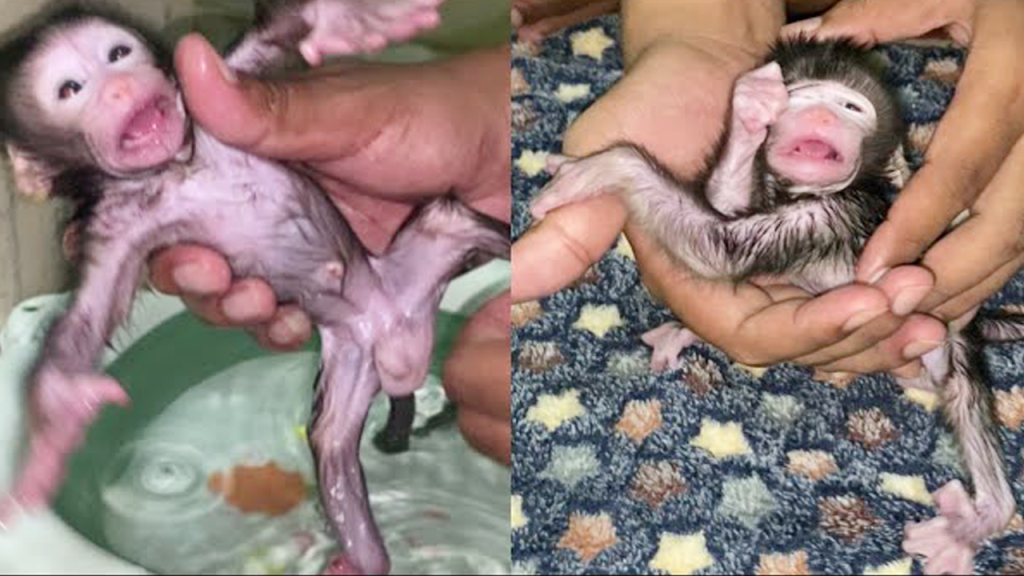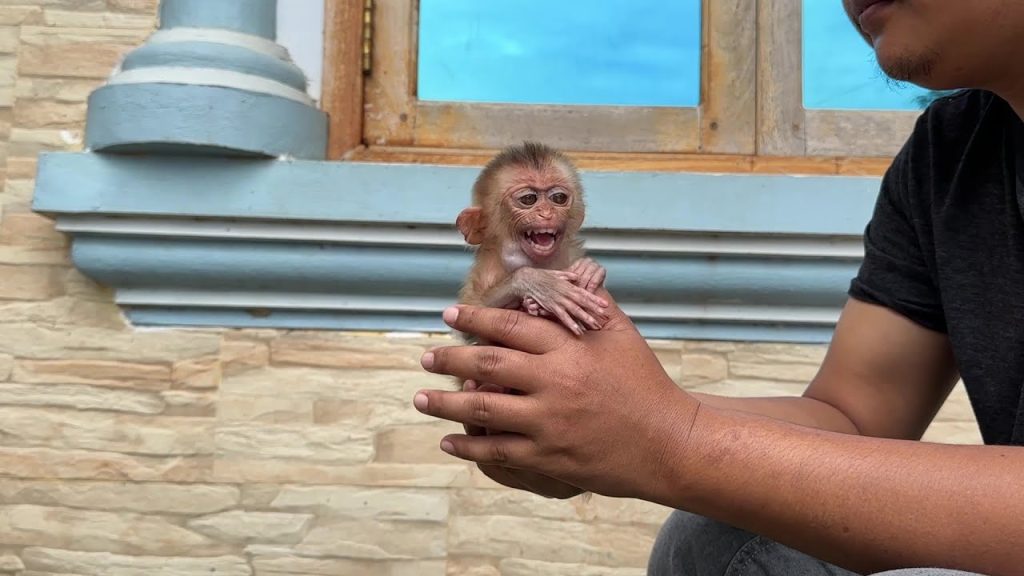
Caring for a sick little monkey is a delicate, slow, and deeply compassionate process. When a young monkey suffers from a skin infection, wounds, or irritation, every touch matters. Their skin is thin, sensitive, and easily hurt, and they often don’t understand why someone is touching the painful areas. That is why giving medicine and applying cream must be done with patience, gentleness, and steady reassurance.
The process usually begins by preparing the medicine—sometimes liquid, sometimes a small tablet crushed into milk. A sick baby may refuse at first, turning its face away or letting the drops spill from its mouth. Illness makes them weak, but fear makes them resist. So the caretaker holds the monkey close, supporting its small body in a warm, secure position. Speaking softly, offering slow sips, or letting the baby smell the medicine first helps reduce stress. After a few attempts, the little monkey begins to accept the taste, swallowing bit by bit. Each swallow is a step toward healing.
Next comes the most fragile part: applying cream to the irritated skin. Cream helps with itching, infection, and dryness, but the monkey doesn’t know that—it only feels discomfort when hands touch its sore spots. To begin, the caretaker rubs a tiny amount between their fingers to warm it. Cold cream can frighten the baby, so warmth feels safer.
The monkey might squirm, cry, or try to escape. Some cling tightly to the caretaker’s shirt; others chatter loudly in protest. But the caretaker remains calm, using slow strokes and gentle pressure. Starting with the least painful areas helps the baby relax. Then, inch by inch, the cream is applied to the arms, chest, back, and legs. For the most sensitive areas—wounds, scabs, or raw patches—the caretaker moves even slower, giving the monkey time to adjust to each touch.
Throughout the process, the monkey’s emotions shift. At first, it trembles or fusses. Then, feeling the smooth cream soothe its skin, its body slowly relaxes. Its hands unclench. Its frantic breathing softens. Sometimes the little one looks up with wide, tired eyes as if finally understanding that this is help, not harm.
By the end, the monkey is calmer, wrapped gently in a towel or resting against a warm chest. The medicine and cream begin working quietly, reducing irritation and helping the skin heal. But even more important is the trust built during the process—trust that brings comfort, safety, and hope for the little monkey’s recovery.


